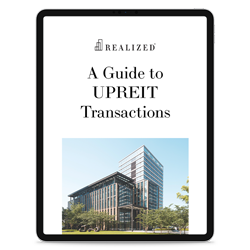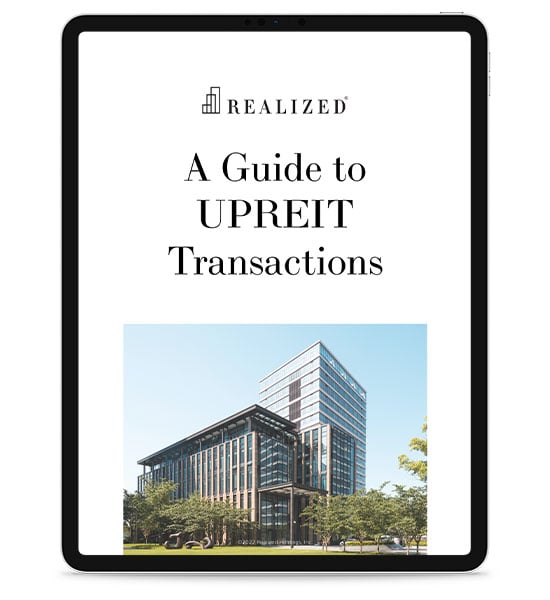
An umbrella partnership real estate investment trust (UPREIT) is a powerful investment tool that many modern investors are finding appealing. This structure is an operating partnership (OP) owning income-generating property, with the REIT having the controlling interest and investors as limited partners. As you contribute property to the UPREIT, you gain OP units and earn dividends on a regular basis. Since the REIT controls the operations and management of the underlying properties, investors have hands-off involvement and earn without any added effort.
Thanks to this structure, UPREITs have become attractive to a wide range of investors, particularly those seeking to diversify while reducing their active role over their assets. However, the same framework opens unique challenges and realities that may not appeal to certain individuals. As such, knowing the benefits and drawbacks of investing in an UPREIT structure is critical to ensure that you fully grasp the implications of this vehicle. Below, Realized 1031 shares what you need to know.
UPREIT Structure Advantages
What benefits can you expect from the UPREIT structure? Here are some of the most prominent advantages.
Tax Deferral
The main pull of an UPREIT is the fact that it can help inventors delay capital gains taxes and preserve more of their wealth. This benefit is made possible by the 721 exchange, which enables you to contribute your property to the operating partnership. Since this action doesn’t trigger the recognition of gains or losses, you can defer capital gains taxes until you choose to do so.
Passive Income
Only the REIT is allowed to handle the operations of the UPREIT’s underlying properties. As you contribute your asset during the 721 exchange, you also give up control to the REIT. Thanks to this benefit, investors can ease the burden of management and enjoy truly passive income.
Enhanced Diversification
UPREITs usually own a wide variety of assets across many sectors. Some own properties within one industry but have the assets spread out in various geographic locations. This feature means that, as an investor becomes a limited partner, they also gain access to the income from the diversified UPREIT portfolio, adding another layer of protection from market downturns in their own portfolio.
Professional Management
The underlying properties benefit from a REIT’s professional management since it’s a company composed of real estate experts. The REIT has the systems and resources to help increase income, manage debt, and resist the effects of market volatility.
Ease of Estate Planning
UPREITs also aid in estate planning and wealth transfer thanks to the nature of OP units. These assets are easily quantifiable, making division among heirs easier. Directly owned property, in contrast, may require more effort to appraise and divide among multiple beneficiaries.
When held until your passing, OP units also undergo a step-up in basis. As the cost basis resets to the OP units’ fair market value during your death, the accumulated capital gains are eliminated. This advantage provides immense tax relief to your heirs.
Potential for Growth and Income
As the REIT employs strategies that enhance the value of the underlying assets, investors may receive increased distributions from REIT operations and benefit from the appreciation of the real estate portfolio.
UPREIT Structure Disadvantages
Various UPREIT structure drawbacks stem from the nature of the contribution itself. Here are the challenges you might encounter.
Tax Isn’t Eliminated
While capital gains taxes are deferred, this doesn’t mean that they’re eliminated. As you convert your OP units to REIT shares, you become liable for tax liability based on the number of units converted. Staggering the conversion can help you manage the payments.
The only time tax is eliminated is during a step-up in basis. However, you may need to liquidate assets while you’re alive due to changing lifestyle needs. As such, it’s important to plan the conversion of OP units ahead of time to manage tax obligations.
Loss of Control
Contributing your property to the UPREIT results in the loss of control over the asset. Some investors will find this beneficial, especially those who are about to retire. However, if you’re someone who still wants to maintain full control over your assets, contributing to an UPREIT may not be the best decision. You lose the power to manage your property, and you have limited say about what the REIT can do to enhance your original property’s income generation capabilities, as well as the rest of the assets within the UPREIT portfolio.
Market Dependence
Among various UPREIT structure cons, market dependence is one challenge that demands constant monitoring. REIT share prices (and by extension, OP unit value) are influenced by stock market conditions, not just real estate fundamentals. As such, timing is essential during conversion and selling to ensure that you maximize your profit.
Complexity
The process of entering UPREITs and the structure itself are legally and financially complex. You will need the guidance of specialized professionals to ensure the correct contribution process and the right timing for conversions.
Wrapping Up: UPREIT Structure Pros and Cons To Know
Before entering an UPREIT, understanding its benefits and drawbacks is essential to ensure that you’re aware of the investment implications. Having this knowledge helps you decide whether tax deferral is worth the loss of control or if enhanced diversification is worth the market dependence of OP unit values. Professional guidance is still necessary to help you get a more in-depth idea of these trade-offs and whether or not they fit your overall investment goals.
Sources:
https://taxfoundation.org/taxedu/glossary/step-up-in-basis/
https://www.irs.gov/pub/irs-drop/rr-99-5.pdf
https://www.floridabar.org/the-florida-bar-journal/ups-and-downs-a-reit-dilemma/



